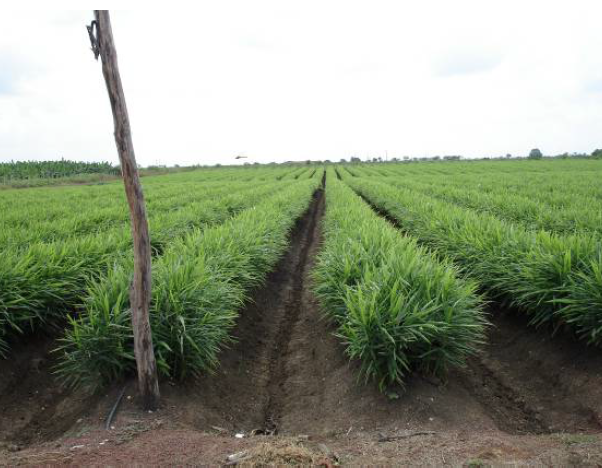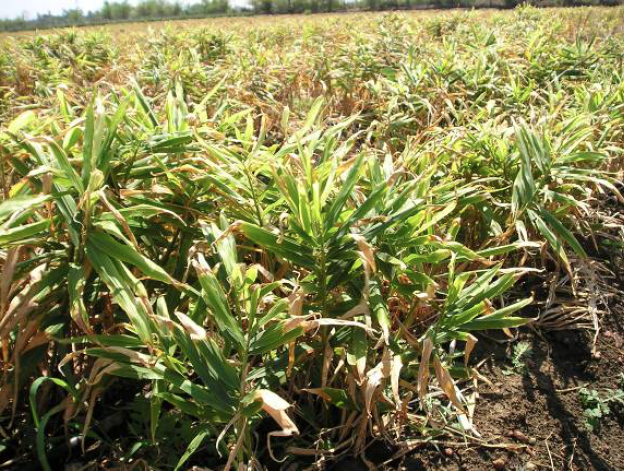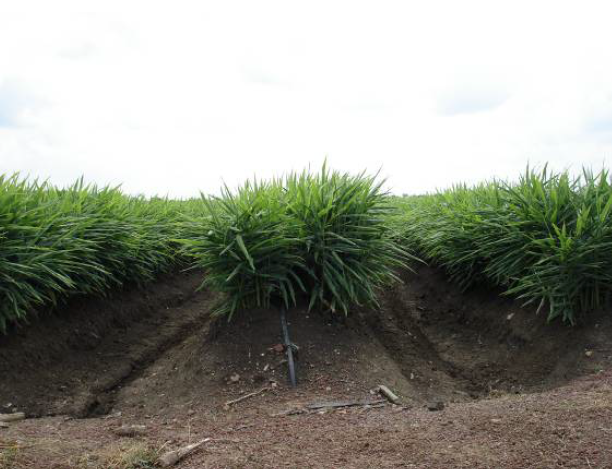Ginger Production Technology
| Vintage people of India 'makaolacata" articulated by the world's leading medical substances Ginger is used in Chinese and Japanese people for a long history of medical substances containing aromatic substance. To this day, the traditional medical systems in the world occur during pregnancy, vomiting, dizziness and cold is used as the primary clinical. Medicinal ginger rich, the people of India, China and Japan in the cooking methods ginger is essential. Thus, all hot and temperate regions of the world in medical popular ginger have been widely cultivated. South East Asian Countries are the origin of Ginger. From India and China, the crop spread to other countries. Currently, Ginger cultivated in countries like India, China, Jamaica, Taiwan, Fiji, Mauritius, Brazil, Indonesia, Japan, Malaysia, Philippines, Thailand and Bangladesh. It is in the Gingiferae plant family and 'Gingifer officinali is the botanical name. The Latin name of the genus cinjiper was derived from the Tamil word injiver. The name Ginger spread by Arab traders to the Greek and Roman developed countries. |
 |
 |
 |
 |
|
Production Status
It cultivated by all tropical and subtropical countries in the world, much of it is produced in India. By almost 30 percent to 40 percent of world production is produced in India. In India, states like Kerala, Arunachal Pradesh, Orissa, Meghalaya, West Bengal are widely cultivated and, Tamil Nadu, Andhra Pradesh and Karnataka are cultivated in the lower area. In Tamil Nadu highly rain fall districts like Kanyakumari and lower palani hills where the ginger cultivated.
Benefits
India, China and the Japanese people are used ginger as food and all the people used ginger as medical substances. Colds, cough, vomiting, dizziness, hypertension, impaired vision problems, such as the ginger is used as drug. Indian Ayurvedic treatment for digestion, fever and stomach diseases, ginger is used heavilyin the production of medicines.
Chin called the dry ginger and pepper, along tippili tea helps to removing mucus in the body for a long time and helps to protect health. Aromatic and medicinal oil extracted from the ginger, helps in preparation of ginger beer, ginger wine. Ginger powder used in the spices products. Foreign countries, ginger used for making Biscuits, Cakes, soup and pickle.
Cultivation practices
Climate
It grows well in medium temperature regions and moisture in the air. Ginger cultivated 1500 meters above sea level. But it grows well in 300 meters to 900 meters above the sea level. At regular intervals throughout the year from 1500 to 3000 mm of rain per year available rainfall areas should be chosen. Land preparation and harvesting periods of dry weather are needed. If cultivated in areas where rainfall is less watering should be done at regular intervals.
|
The selected varieties
| Varieties |
Green ginger yield t / ha |
maturity (days) |
Dry potential yield (%) |
Fiber (%) |
Olioresin (%) |
Perfume oil (%) |
| IISR |
22.6 |
200 |
20.7 |
4.5 |
6.7 |
1.8 |
| Suprabha |
16.6 |
229 |
20.5 |
4.4 |
8.9 |
1.9 |
| Suruchi |
11.6 |
218 |
23.5 |
3.8 |
10.0 |
2.0 |
| Surabhi |
17.5 |
225 |
23.5 |
4.0 |
10.2 |
2.1 |
| Himagiri |
13.5 |
230 |
20.6 |
6.4 |
4.3 |
106 |
| IISR Mahima |
23.2 |
200 |
23.0 |
3.26 |
4.48 |
1.72 |
| IISR Regitha |
22.4 |
200 |
19.0 |
4.0 |
6.3 |
2.36 |
Local varieties
| Varieties |
Green ginger yield t / ha |
maturity (days) |
Dry potential yield (%) |
Fiber (%) |
Olioresin (%) |
Perfume oil (%) |
| China |
9.50 |
200 |
21.0 |
3.4 |
7.0 |
1.9 |
| Assam |
11.78 |
210 |
18.0 |
5.8 |
7.9 |
2.2 |
| Maran |
25.21 |
200 |
20.0 |
6.1 |
10.0 |
1.9 |
| Himachal |
7.27 |
200 |
22.1 |
3.8 |
5.3 |
0.5 |
| Nadia |
28.55 |
200 |
22.6 |
3.9 |
5.4 |
1.4 |
| Rio -D-Jenario |
17.65 |
190 |
20.0 |
5.6 |
10.5 |
2.3 |
|
Soil
Clay sediment organic content of the soil is packed with all kinds of land area, ginger can able to grow. But choose the land by at least 30 cm deep in the soil is necessary. Alluvial gravel mixed red soil is also suitable for ginger cultivation. In 1 meter deep, well-drained soil the ginger yield is high.
Soil pH should be 6 to 6.5. Drained lands should be avoided. Ginger well absorb the nutrients in the soil. By their nature, avoid ginger cultivation again and again in the same field.
Propagation and seed rate
Ginger is propagated by seed tubers. Seed tubers that has 5.0 to 2.5 cm in length and weigh from 20 to 25 grams are used to make one or two viable nodes are used in propagation.
1500 to 1800 kg/ha seed tubers need for plains and hilly areas 2000 to 2500 kg/ha are recommended.
Those that used as seed tuber, after the harvest, it should be separated according to the quality. Select the seed tuber without disease infection and dip it into the 0.3% Mancoseb and 0.1% Malathion Solution and dry it in shade, should be stored using a sand pit. Rot checked once a month, if any, should be cleared.
Planting season
Ginger is a rainfed crop. It cultivated dependent on the rainfall. Thus, the crop planting should be done in the first week of April. In west coast, ginger planted month of May after a summer rain. But in places with good irrigation facilities and can be planted until mid to late February and March. |
Land preparation
After the summer rains, plough the land as fine tilth. In deep well ploughed field raise 1 meter width, 15cm height and enough length beds at 50 cm intervals. If irrigation facilities available raised a bar with 40 cm intervals.
In Nematode and root rot disease affected areas, 40 days before planting, should steamed soil cover beds with polythene. By doing this, the cultivation can be done without damage.
Seed treatment
Seed tubers should be soaking by 5g Pseudomonas 10 days before sowing and dried in the shade. By doing this, not only to increase visibility of dormancy and germination of the nodes can protect from disease. |
 |
Sowing
Before sowing the seeds, 25 -30/ha FYM and 4 kg/ha Pseudomonas spread mixture on top of the beds. If spread 2t/ha neem cake powder, it protect from root rot disease. Then seed can be sown at a spacing of 20-25 cm. When planting a maximum depth of 5 cm should be transplanted. After planting, sand mulch should be done.
From the date of sowing, depending on soil moisture will begin rising from 25 to 35 day.
Application
When planting to harvest good yields by the above basal levels of manure and neem cake powder to be applied. Recommended dose of NPK is 75:50:50 kg/ha. On this 50% of the phosphorous should be applied as basal. Nitrogen and potassium should be applied 50% (37.5 and 25kg) after 40 days of planting and remaining dose should be applied after 90 days of planting. Boron and 3 kg / ha and zinc 5 kg / ha of mineral fertilizers in crop yield by providing additional research results suggest.
Mulching
Laying mulch increases seed germination. By increasing soil moisture and protects the organic nature soil mulch setting considered necessary. Mulching will be set during the first planting. 10-12 tons/ha green leaf or 5-6 ton/ha dried leafs are used for mulching. Similarly, 45 and 90 days after planting, mulching is to be set. Easily available with coconut leaves, leafy branches, banana leaves, rice paddies, coconut pith, sugarcane trash of the inputs can be used as mulch.
Water Management
To obtain good yields in ginger 1320 to 1520mm rainfall is required. Planted in April-May, depending on the moisture of the soil by watering 2-4 times a week for the time required. In the absence of rain, watering should be done at intervals of 15 days. Seed tuber germination time in ginger and tubers produced time moment essentially require watering times.
Weed management
Weed management is carried out twice during the cultivation of ginger. Weed removal of the first to set up Mulching, the second for the second time before the weeds must be removed at intervals of 45-60 days, depending on the amount of weed. When we remove the weed, the plant needs to be taken care of without affecting stem and root. After completing the weeding the earthih up should be done.
Crop rotation
Ginger absorbs the large amount of nutrients in the soil. So ginger should not be cultivated the same land continuously. So it should be cultivated with rotation of tapioca, beans, chow-chow and other vegetables. Ginger can be cultivated as a single crop or intercrop with coffee, orange, banana etc. |
Plant Protection
Insects
Stem borer
Stem borer causes the most damage in ginger. If the insect infested plants become yellow color of the leaves, stems drying.
To control pest, a low-level attack subjecting Peo - de – Janeiro may be used for cultivation. It should be control using prakkonite family of natural enemies or spray the pesticide monocrotophos 0.1% (1 liter of water 1 ml) and infested plants should be removed.
Leaf roller
Leaf roller attacks the leaves and leave are rolled, which are found in large numbers in the months of August and September. To control it, to spray carbaryl 0.1% (1g per liter of water) or dimethoate 0.05% or phosphamidon 0.05%.
Tuber scales
Tuber scales attacks the tuber in the field and also in godowns. It attack the plant severely, so the plant dried. In godown tuber scale buds dried and it reduces the germination capacity.
To control the tuber scales, thrips and other sucking insects, spray phosphamidon 0.05 per cent (5 ml with 10 liters of water).
Spray malathion in the bag which is filled with tuber.
Diseases
Tuber rot disease
It is the most important disease which attacks the ginger. Where there is not even adequate drainage areas of stagnant water found in this disease. The disease is transmitted through the soil and seed tubers
To control the disease, improve the drainage facilities. Use disease free tuber for germination and the tubers are treated with Mancozeb or copper oxychloride, a fungicide, a liter of water, 3 g of the quantities produced in the solution for 30 seconds or before saving the tuber soak with streptocakki 200 ppm (ie, a liter of water, 200 ml). By placing large quantities of farmyard manure along with a decrease of the disease seriously.
Leaf spot disease
To control the disease, Bordeaux mixture 1% or copper oxychloride 0.25% (2.5 g per liter) apply as a foliar spray.
Microbial wilt
To control the disease, the tuber can be treated in steptocycilin 200 ppm before sowing. |
Harvest
Ginger plant preparing for harvesting within eight months from the date of planting. Brown leaves are ready to be harvested at arrival points to the bottom-up dries. This condition should be harvested in order to extract the ginger oil. The leaves are harvested in the dry state by seed tuber used. Harvested ginger, removed from the dried leaves, roots, and tubers, unearthed by the adhering soil is removed, washed with water and dried in shade. The ginger used as vegetable and cooking, it should be harvested from the fifth month after sowing. This immature harvested ginger has less alkalinity and fiber.
Yield
Well maintained crop average yield from 15 to 20 tons/ha of ginger rhizomes.
|

|
 |
Post harvest
Ginger - and sell it off as soon as ginger, washed, dried in shade and then stored for 2 days. If we keep the ginger in 55 cm heat and 65% of humidity, stored upto 6 months.
Dry ginger - used after drying.
Black Sin - the rhizomes are put in boiling water for 10-15 minutes, remove the skin and dried. It is available in black color is killing tubers.
Processed ginger
Processing in sugar solution: Ginger rhizomes should be well washed, cut the roots and then cooked in sugar solution and then dried.
Processing in salt water: wash the rhizome, peel skin, soak it in salt water. Then shall pour the water mixed with a little salt and vinegar and soak in 7 days. Then rinse well, and sterilize with 10 minutes. Drilled the tuber and soak the sugar solution (48 kg sugar and 60 kg of ginger) in the quantities to be sterilized. Boiled it three times and dried it.
Ginger Candy
Cook the tuber well and drained it and then kept in the syrup (for syrup 1 kg to 1.5 kg sugar, add ginger) and boil it for two hours and to keep cool. Pour the syrup over the top of the plates and cover it. It could taste the longer lights up. The material is made from ginger is ginger oil and oliyoresin.
Seed tuber storage
Increase the seed tuber germination capacity must be stored in pits on the spot in the shade. Choose the tubers for seed without infection. For this choose the plant of six to eight months of age without disease infection. Seed tubers should be treated with Quinalphos 0.075% and Mancozeb 0.3% mixture, soak 30 minutes in the solution. Apply cow dung on the lateral wall of the storage pit. Arrange the seed tuber in several layers in the pit. After every layer broadcast the sawdust for 2cm. Top of the pit with the flow of air give a little gap and close with wood. We should check the seed tubers for three weeks interval and eliminate the shrunken and disease infected tubers.
Seed tuber storage
December – January month harvested tubers are sowing in the month of May – June. So we have to store the tubers for 3 to 4 months. Seed tubers traditionally stored in sand or pits in shade. Because of this the tuber dry and rot disease affected before sowing and germination, post harvest loss is very high. Seed storage as a result of research in technology-ventilated seed rhizome 3 percent to 100 gauge polythene bags, tying it down on dry sand saving, post harvest losses are decreased viability in seed tubers found. Soak the seed tubers in Quinalphos 0.1% or Dythene M 45 and dry it and store the tubers.
|
Source:
P. Paramaguru, C. Subramanian, M. Mohanalakshmi, R. Balakumbagan and N. Kumar. 2012. Department of Spices and Plantation Crops, Tamil Nadu Agricultural University, Coimbatore 6410 03.
Arecanut and Aromatic Plants Development Board, Kozhikode. |
|

